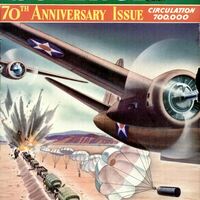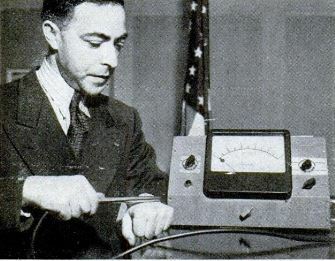Detector for metal in wounds
Item
-
Title (Dublin Core)
-
Detector for metal in wounds
-
Article Title and/or Image Caption (Dublin Core)
-
Title: Radio metal locator cuts in treating war wounds
-
extracted text (Extract Text)
-
Radio Metal Locator Cuts Time in
[Caption]U. S. war surgery employs this
Modern
radio finder to locate metal fragments
and speed treating of wounds. Above, a
diagram showing the device's principle [Caption]
SIMILAR in principle to a radio "treasure
finder," a new electric probe takes only
a few moments to locate a metal fragment
in the wound of a war casualty, eliminating
loss of precious time in X-ray examination.
When an exploring coil in a steel finger is
passed over the body of a patient, a dial
pointer swings over as it approaches the
point beneath which the metal lies, its great
est deflection being at the spot nearest the
fragment. Two readings from different an
gles show the position and depth, permitting
a surgeon to remove the metal in a fraction
of the time formerly required. Given its first
tryout in the Pearl Harbor raid that started
the war with Japan, the instrument success
fully located metal splinters in 20 cases and
proved them absent in many others. Inex
pensive to construct, it may find use not only
in war areas but also as standard hospital
equipment to perform similar service in
peacetime surgery.
-
Language (Dublin Core)
-
eng
-
Date Issued (Dublin Core)
-
1942-05
-
pages (Bibliographic Ontology)
-
124
-
Rights (Dublin Core)
-
Public Domain (Google Digitized)
-
Archived by (Dublin Core)
-
Meneghetti Roberto
 Popular Science Monthly, v. 140, n. 5, 1942
Popular Science Monthly, v. 140, n. 5, 1942



